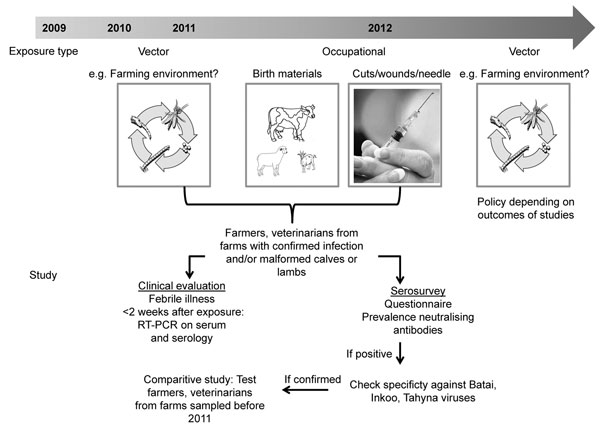Volume 18, Number 11—November 2012
Research
Lack of Evidence for Zoonotic Transmission of Schmallenberg Virus
Figure

Figure. . . . Testing algorithm to determine whether Schmallenberg virus can be zoonotically transmitted, the Netherlands. RT-PCR, reverse transcription PCR.
1These authors contributed equally to this article.
Page created: October 16, 2012
Page updated: October 16, 2012
Page reviewed: October 16, 2012
The conclusions, findings, and opinions expressed by authors contributing to this journal do not necessarily reflect the official position of the U.S. Department of Health and Human Services, the Public Health Service, the Centers for Disease Control and Prevention, or the authors' affiliated institutions. Use of trade names is for identification only and does not imply endorsement by any of the groups named above.